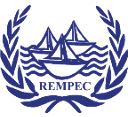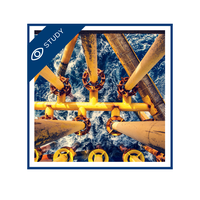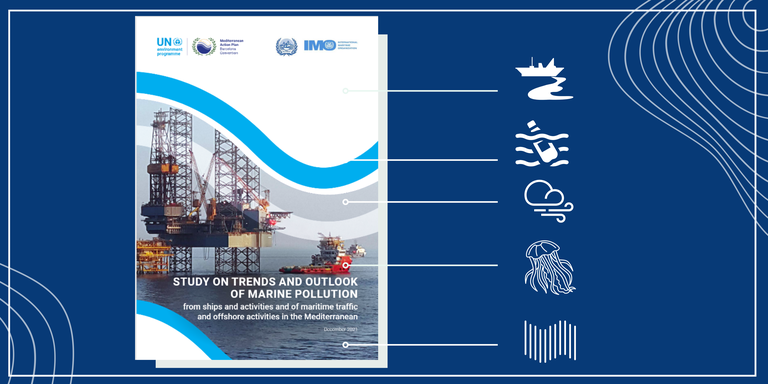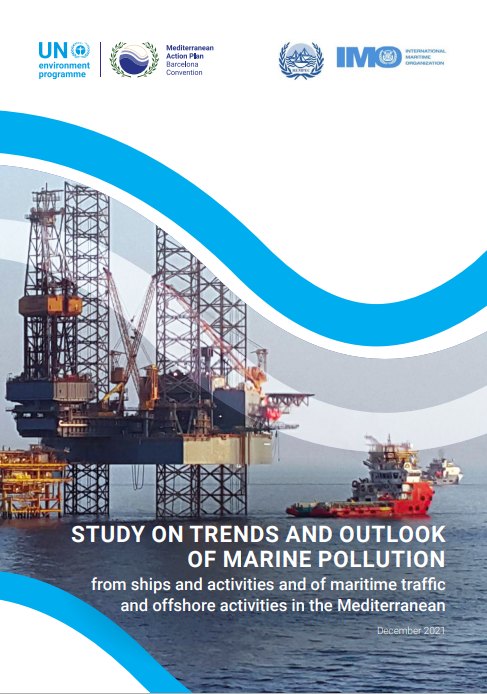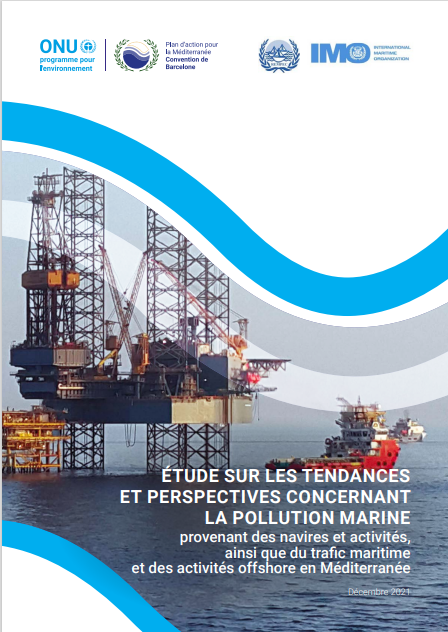NEW STUDY | TRENDS AND OUTLOOK OF MARINE POLLUTION – Aug 23, 2022
STUDY ON TRENDS AND OUTLOOK OF MARINE POLLUTION from ships and activities and of maritime traffic and offshore activities in the Mediterranean.
Notwithstanding its limited size, the Mediterranean is significantly affected by both commercial and passenger traffic. Most of the Mediterranean commercial traffic is internal (about 58%). However, the basin plays an important role in international merchant shipping, travelling along the Suez-Gibraltar route and entering the basin from the Bosporus Strait, as well as for Mediterranean seaborne traffic. In the period 2010-2019, seaborne trade to and from countries in the Mediterranean has increased by 284 million tonnes. Dry bulks have grown the most in tonnes, while containerized cargos have grown the most in relative terms. Liquid bulks have only grown marginally (3%), while non-containerized general cargo has declined. In the same period, port calls increased by about 75%, with a particularly large increase in port calls due to passenger vessels.
Maritime traffic and offshore oil and gas (O&G) exploration and production are key maritime activities in the Mediterranean and represent important drivers of marine pollution in the basin. They generate a variety of different pressures on the marine environment: loss or discharge of solid wastes contributing to marine litter pollution, emissions of gaseous pollutants and particles in the atmosphere, emission of continuous and impulsive underwater noise and vibrations, release of oil and other contaminants in marine waters, introduction of invasive species through ballast water and hull fouling.
In this report we have compiled knowledge about maritime traffic and offshore O&G activities and their impacts on the marine environment, focusing on five main aspects: pollution from oil and chemicals, marine litter, air pollution, non-indigenous species (NIS) and underwater noise.
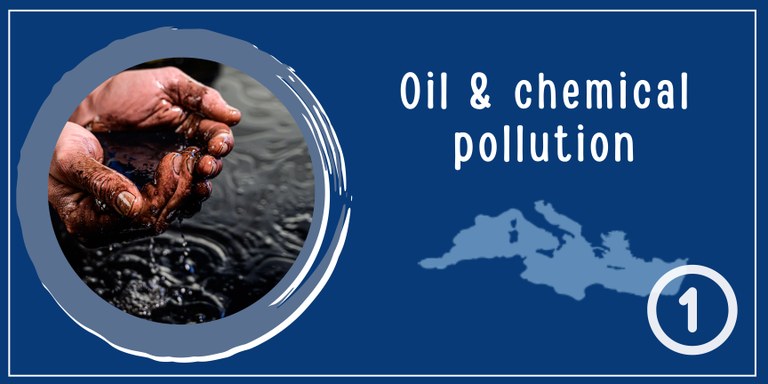
-
Oil and chemical pollution
Maritime traffic on the world’s oceans has increased dramatically over the past 20 years, thus increasing the risk of pollution caused by shipping. Although environmental regulations are strict, particularly under the MARPOL Convention (International Convention for the Prevention of Pollution from Ships), polluting substances continue to be discharged into the sea. Shipping activities generate a variety of chemical pollution pressures through the release of oil and other chemicals. Spills can occur in case of accident, during routine operations, in ports, as well as at sea. They can be voluntary or accidental, resulting from a human decision, a human error, or a technical failure.
Regarding oil and chemical pollution, a sharp decreasing trend in major incidents has been documented in recent decades, worldwide and in the Mediterranean. It can be concluded that the impact of the international regulatory framework adopted through the International Maritime Organization (IMO), as well as of technical improvements and of cooperation activities undertaken at regional level is very positive, especially as far as prevention of accidental pollution is concerned. Nowadays operational pollution from ships is a major source of oil pollution in the Mediterranean region. Up to 1,500-2,000 incidences of operational oil spill are estimated to occur annually in the basin. The distribution of oil spills is well correlated with major shipping routes, crossing the Mediterranean from east to west and linking the major ports.
The effectiveness and rapidity of detection have been enhanced thanks to on-going research and innovation (e.g. with the use of satellites).
Regarding oil and chemical pollution, a sharp decreasing trend in major shipping incidents has been documented: it is reasonable to expect that this situation will stabilize, if not improve further, in the future and an even lower occurrence of large oil spills due to incidents can be expected. Operational pollution and illicit discharges are however still a problem for the pollution of the Mediterranean waters.
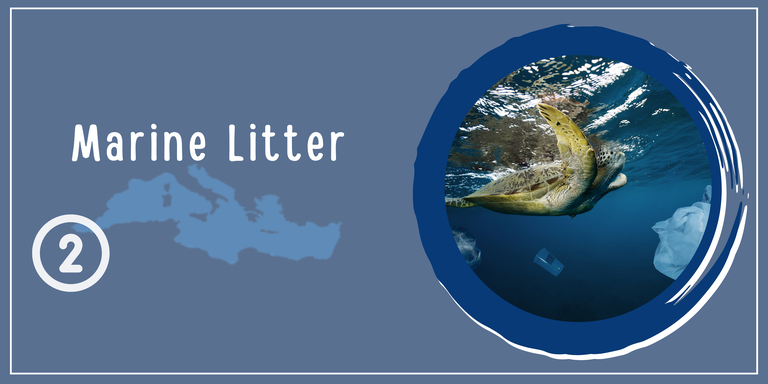
-
Marine Litter
Marine litter poses a global challenge, being found widespread in the marine environment. It varies in origin, size, composition, as well as in the pathways it takes to the sea and the impacts it determines on nature, society and economy. It has been estimated that 86 million tons of plastics have accumulated in the world’s oceans, while 4.6-12.7 million tons are added every year. Marine debris enters the seas from both land-based and sea based sources. Marine litter consists of a wide range of materials, including but not limited to plastic, glass, metal, paper and wood. However, approximately 60% to 80% of the world marine litter is made of plastic.
Marine, and litter, plastics in particular, have various potentially harmful implications on marine ecosystems and human activities at seas. Each year, millions of animals that live in the oceans are debilitated, mutilated, and killed by marine litter. Marine litter also carries a risk to human health and has significant implications for human welfare, negatively impacting vital economic sectors, such as tourism, fisheries, aquaculture, or energy supply and inflicting economic loss on individuals, enterprise and communities.
No specific estimation of litter originating from ships in the Mediterranean Sea is yet available. Existing data show a correlation between marine litter distribution and main maritime routes. Fishing-related marine litter, in particular, has been showed to be predominant in areas characterized by intense fishing activities.
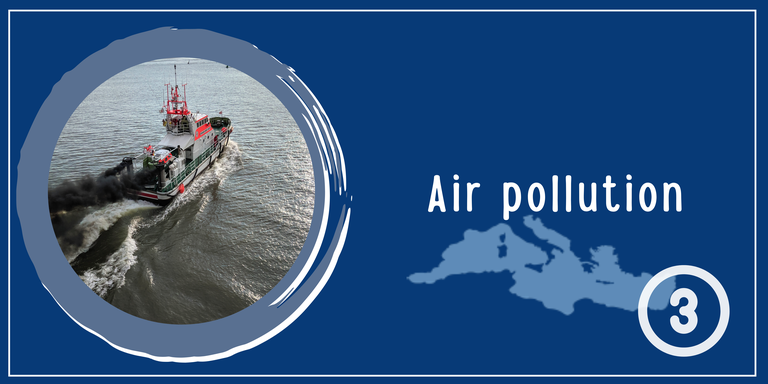
-
Air Pollution
Maritime shipping relies heavily on fossil fuels. About 3.5 million barrels of high sulphur residual fuel oil (bunker fuel) per day were consumed by the sector in 2017, which represent about 50 percent of the global fuel oil demand. Most of this fuel oil has a high sulphur content, which results in the emission of sulphur oxides into the atmosphere.
Emissions from ships are transported in the atmosphere for hundreds of kilometres, thus contributing to air quality deterioration on land, even if they are emitted at sea. Since ship exhaust gases contribute to the worldwide pollution of air and sea, ships are facing an increasing number of rules and regulations, as well as voluntary appeals from international, national, and local legislators. Some solutions have been proposed for improving air quality in coastal areas and ports. These include the establishment of reduced speed zones, emission control areas, and adaptation of shoreside electrification technologies for vessels while they are at berth.
Despite in-port ship emissions representing only a small fraction of the global emissions associated with shipping, they can have an important environmental effect on coastal regions of the Mediterranean Sea, which often have harbours located near urban and industrial centres. From 1 January 2020, the IMO Global Sulphur Cap is being fully implemented. MARPOL VI standards are expected to reduce SOx emissions by approximately 75% from typical operations using residual fuels. In addition, the possible designation of the Mediterranean Sea as an Emission Control Area for sulphur oxides has been estimated to be able to lower the emissions in the Mediterranean by an additional 78.7% for SOx and 23.7% for PM2.5, when compared with the implementation of the IMO Sulphur Cap.
In the case of air pollution, thanks to the measures in place and possible new ones, one can expect the emissions from the shipping sector in the Mediterranean to be reduced in the medium/long term.
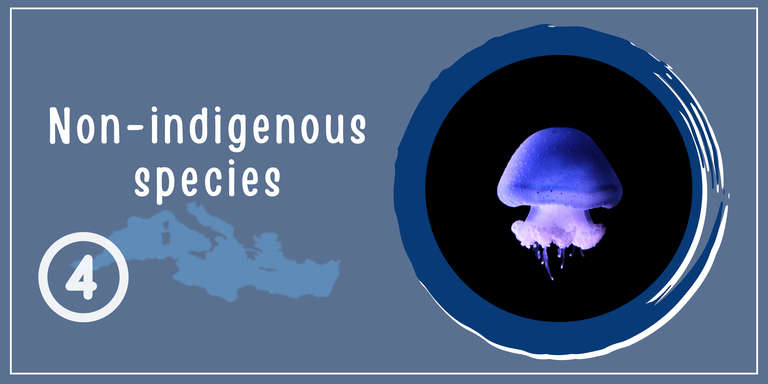
-
Non-indigenous species (NIS)
With the human population increasing steadily, and the mobility of people and goods at an unprecedented intensity at global scale, the spread of NIS has been accelerating in the last decade. As a result, the spread of NIS is now a hot issue at global scale, and the so-called “biological invasions” are at the forefront of research in many disciplines such as economics, ecology, conservation and food security. The Mediterranean Sea, in particular, is one of the seas that is most affected by NIS, in terms of high rate of introduction, number of taxa recorded and duration of permanence. Mediterranean biodiversity is indeed quite rich in NIS belonging to several groups such as macrophytes, fishes, molluscs, polychaetes, bryozoans and crustaceans.
Over the last two decades, changes in the Mediterranean marine biodiversity related to the introduction of NIS have been reported as the consequences of intense maritime traffic corridors and aquaculture activities. Among these activities, shipping is considered the major pathway for non-indigenous species (NIS) introductions worldwide, transporting organisms and propagules, mainly in ballast water, or as fouler on vessel hulls.
The impacts of NIS in the Mediterranean are well known and they also include the impacts on human health and on human activity. For instance, the jellyfish Rhopilema nomadica has been reported to negatively affect coastal power- generation installations, whilst impacting fisheries, human health and tourism. The number of NIS recorded increased over the period 1970-2013. In the Mediterranean, NIS have increased by 204% (in the Baltic by 86%, and in the Western European margin by 173%).
Given that corridors represent the main vector for NIS introduction in the Mediterranean, followed by vessels, it is not possible to estimate whether and when the implementation of measures preventing NIS introduction by ships would result in tangible results at regional scale.
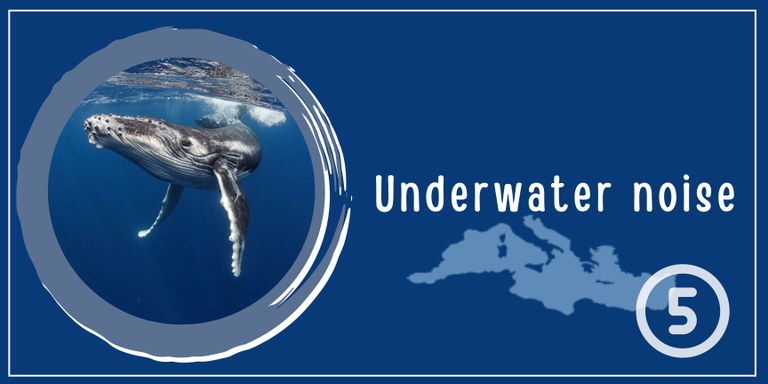
-
Underwater noise
Over the last century, human activities such as shipping, recreational boating, seismic surveys and low-frequency navy sonars and energy exploration have increased along the coasts, offshore, and in deep ocean environments. Noise from these activities travels long distances underwater, leading to increases and changes in ocean noise levels. Rising noise levels can negatively impact ocean animals and ecosystems. These higher noise levels can reduce the ability of animals to communicate with potential mates, other group members, their offspring, or feeding partners. Noise can also reduce an ocean animal’s ability to hear environmental cues that are vital for survival, including those keys to avoiding predators, finding food, and navigating to preferred habitats. Noise pollution from these activities is a problem often neglected by reviews of marine pollution, yet low frequency noise has doubled each decade since 1950.
The exposure to increasing levels of underwater noise pollution causes adverse effects on marine organisms over different timescales (acute vs. chronic effects) and extents, ranging from temporary reduction in hearing sensitivity and behavioural effects to more dramatic effects such as death.
Sources of marine noise pollution include ship traffic, oil and gas exploration and exploitation, industrial and military sonar use, the use of experimental acoustic sources, undersea explosions, and offshore and inshore industrial construction works.
The implementation of the full portfolio of policy and innovative technological measures could decrease underwater noise impacts, while the expected increase in the Mediterranean maritime traffic is expected to increase the pressure.
Regarding oil and chemical pollution, a sharp decreasing trend in major incidents has been documented in recent decades worldwide and also in the Mediterranean. It can be concluded that the impact of the international regulatory framework adopted through the IMO, as well as technical cooperation activities undertaken at regional level, is very positive, especially as far as prevention of accidental pollution is concerned (UNEP(DEPI)/MED IG.23/23). It is reasonable to expect that this situation will stabilize, if not improve further, in the future and an even lower occurrence of large oil spills due to incidents can be expected.
Instead, numerous incidents of minor dimension are still reported. In a scenario of increased maritime traffic, a decrease in occurrence of such events is improbable, even with growing attention to safety procedures. But improved preparedness and availability of operative intervention measures are expected to contribute to reducing impacts, both in magnitude and in spatial extension.
Based on the evidence presented in the study, some knowledge gaps and actions gaps, and related recommendations can be identified. The recommended actions fit into the framework of the Draft Mediterranean Strategy for the Prevention of, and Response to Marine Pollution from Ships (2022-2031).
The Mediterranean Strategy for the Prevention of, Preparedness, and Response to Marine Pollution from Ships (2022-2031) was adopted by the Contracting Parties to the Barcelona Convention, in 2021 (Decision IG.25/16) and sets seven Common Strategic Objectives (CSOs). These apply to the Mediterranean region as a whole, and Contracting Parties to the Barcelona Convention, alongside the various organisations and institutions of the Mediterranean, each have a role to play in achieving these objectives.
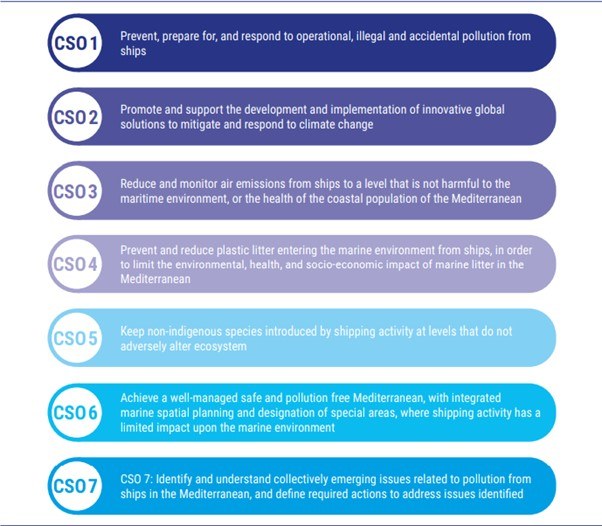
Common Strategic Objectives (CSO) of the Mediterranean Strategy for the Prevention of, and Response to Marine Pollution from Ships (2022-2031).
Following this strategy (2022- 2031) and the effective implementation of its action plan, the main objective highlighted by the document “STUDY ON TRENDS AND OUTLOOK OF MARINE POLLUTION” is to keep supporting and promoting "A clean and healthy Mediterranean marine and coastal environment with a sustainable and pollution free maritime sector, supported by a rigorous enforcement system and strengthened multi-sectoral cooperation, for the benefit of present and future generations".
Related news:

